Why Are Anime Fans Obsessed with Steven Universe?
by Jacob Chapman,If you've been to an anime convention in the past year, you've probably seen colorful, gem-studded cosplay like this filling the hallways.




No, these aren't some new evolved breed of Homestucks. They're characters from Steven Universe, a show that began airing on Cartoon Network in fall of 2013 and exploded in popularity this past spring. Steven Universe fans come from all walks of life, but the show's crossover appeal with anime fandom stands out for many reasons. Similar to the Avatar The Last Airbender franchise, Steven Universe was influenced heavily by the style and content of Japanese animation. But while Avatar cribbed a visual style and some tone choices from anime in service of a more "Lord of the Rings by way of Hong Kong cinema" plot, Steven Universe is in love with its anime influences on a truly sublime level.

Our story revolves around a "magical boy" named Steven coming into his heroic destiny as a half-human-half-"Gem." Gems are an alien race responsible for all that body paint in the pictures above. They're sentient rocks (fabulous ones like quartzes and crystals!) with hard-light projection bodies, and their history with earth is complicated. As the world's first magical boy of his kind, Steven undergoes magical training with his three superheroine Gem mother figures (Garnet, Amethyst, and Pearl) in the sleepy boardwalk town of Beach City.
Things quickly become extremely anime.
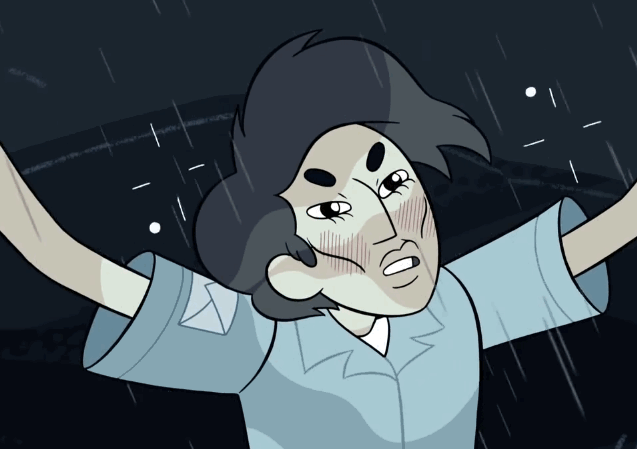
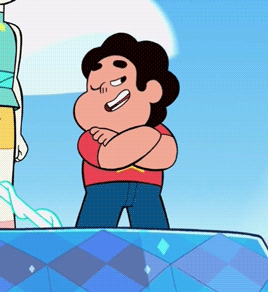


From simple sight gags to sparkly transformation sequences to an episode titled "An Indirect Kiss," the number of anime homages packed into Steven Universe is staggering, and some are more obvious than others, so I went on a quest to catch 'em all (okay, some) and talk a little bit about what makes this show so special. Don't worry, I'm not interested in spoiling the series for the uninitiated, so any references that can't be shared without explicit spoilers will be left out. (I also had to limit this editorial to anime references specifically because the number of nods to Japanese games, fandom memes, and other pop culture references is equally staggering and could fill many more articles. I could do a piece on Pokémon jokes alone.)

This series is a unique, genre-shattering experience packed with love, care, and anime, so I highly encourage everyone to check it out for themselves. Here are some of the otaku-friendly moments you can expect from Steven's universe!
Pretty in Pink


It should come as no surprise that the majority of Steven Universe's tributes are shojo or mahou shojo-related, and while the screenshot comparison above might be pure coincidence, Steven could also have picked up the pose from one of his favorite manga.

Yes, Steven reads Sailor Moon. On top of that, his swordfighting fellow Gem, Pearl, has apparently seen Revolutionary Girl Utena. Just check out those moves!
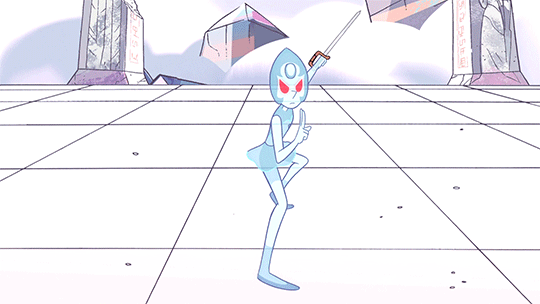





Steven bears his own curious similarities to the revolutionary heroine, with rose-themed powers inherited from an inspirational figure, and a very special girlfriend of Indian descent, Connie Maheswaran, who trains by his side. Of course, you don't have to take my word for it.


Sailor Moon and Utena are the show's strongest influences, not only visually, but structurally as well. The show's predominantly playful tone, interrupted by crushing drama at key moments, is comparable to many successful anime series, but feels closest to Sailor Moon in its glorification of the strengths of femininity, dilution of gender barriers, and emphasis on a wide variety of relationships between women, aimed at a family audience. Story-wise, Steven Universe uses its episodic format to develop complex ideas, symbols, and worldbuilding details into innocuous and sometimes silly stories, just like Utena. The laundry list of references might be longer in the categories beneath this one, but on a deeper level, Steven Universe's heart is closest to these 90s shojo classics in its visual language and emotional appeal.
Of course, sometimes it's just a good excuse for a sight gag.
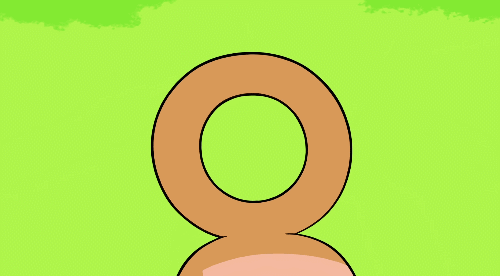
Scaring Small Children
Anime and American cartoons both share a long, proud tradition of traumatizing their audiences without warning. (What do you have against deer moms and lion dads, Disney?) So before you assume Steven Universe is all pink and flowery warm-fuzzies, enjoy this handful of darker callbacks to more adult-aimed anime and manga.




Sure, this monster's resemblance to Unit 01 and Steven's reaction to LCL could be pure coincidence, but the clip below proves that there's some strong Evangelion love within the SU crew.
Yup, right down to the piano rendition of the show's opening theme. Like Shinji Ikari, Steven arrives at a personal epiphany in this scene, although in true Evangelion fashion, the results of his journey are much different from what he expected them to be.
Can't be any worse than that time Steven turned into Tetsuo, though.
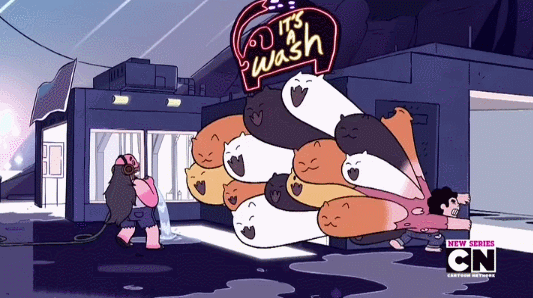

It's just like Akira! Except with fuzzy-wuzzy kitty-cats instead of oozing flesh pustules.
Once again, this eerie homage might be a coincidence, if not for the far more blatant Akira imagery in the scene where the Gems visit "The Geode," an ominous relic of still-unknown power.


We may not know what the Geode is capable of just yet, but given its anime inspiration, it's definitely Bad News. Still, nothing else quite compares to the moment Steven Universe references a Junji Ito story. Which one? Well, even if you don't know the title, you're probably familiar with its most iconic imagery.


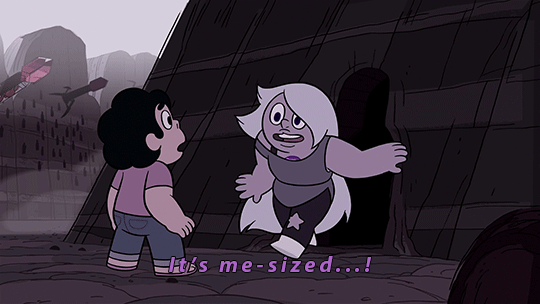

Yup, it's the deeply upsetting one-shot manga about people cramming themselves into specially made holes and tunneling to deep unknown horrors through a cliffside, now in colorful cartoon form. The Enigma of Amigara Fault is fun for the whole family!
The Classics


At the end of the day, you can't beat the classics. Amethyst has her very own flying nimbus in this episode (and in true Goku fashion, decides to try eating it), but that's not the only Dragon Ball Z reference in the show.
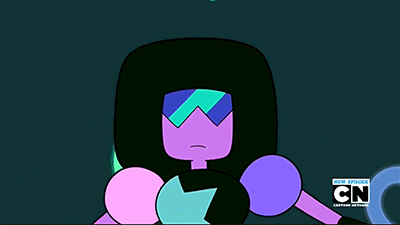
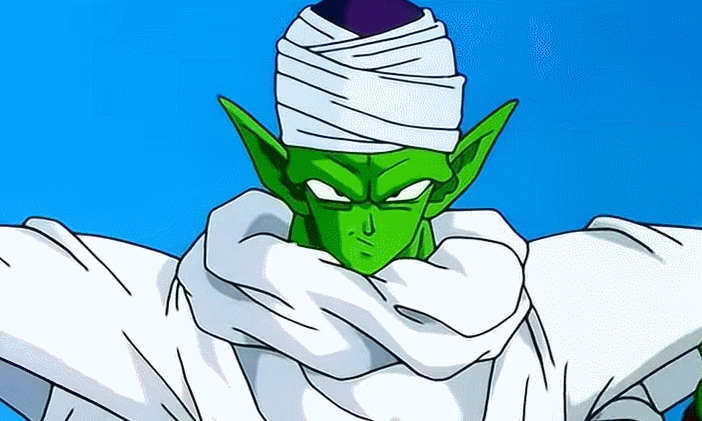
Perhaps because they're from such well-known sources, the mainstream anime references are some of the baldest in the show. (Sorry, Garnet.) Steven Universe doesn't bury the lede, and Cartoon Network's official clip from this episode is explicitly titled Garnet's Anime Training Montage. The volume of anime jokes in that clip is pretty intense, so I'll let you pick out your favorites for yourself. (My personal favorite gag is when Hopper's scouter skips straight from 8,000 to 10,000. Dodged that meme!) The episode doesn't only focus on 80s and 90s shonen classics, though. It saves its biggest guns for last in the form of an extended Gurren Lagann tribute.
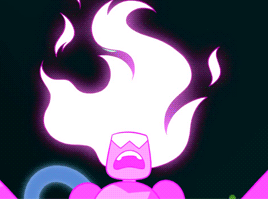

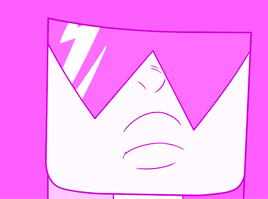

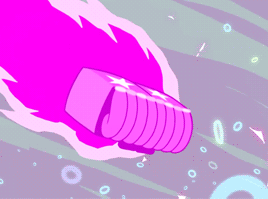
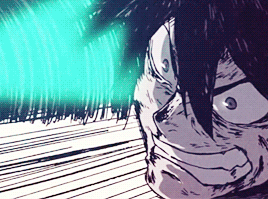
Magnificent.
Steven Universe's most mainstream anime references have a softer side to them as well. The Emmy-nominated episode, "Lion 3: Straight to Video," is a moving spiritual remake of Cowboy Bebop's "Speak Like a Child," beginning with lackadaisical comedy and ending with an unexpected human connection through a worn-out VHS tape.








(Okay, it was a Betamax tape in Cowboy Bebop, but that's not important.)
Speaking of mushy stuff, the show's Ghibli references are voluminous, but they're also more subtle and style-influential than direct and screencap-able. Characters cry big gloppy "Ghibli tears" and do the Ghibli "shocked hair" thing, but it's more a pervasive style choice than anything spelled out directly.

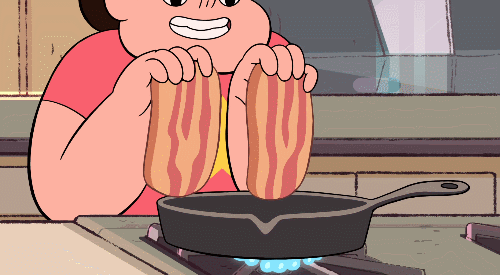
(Okay, except when it is spelled out directly on production materials. You can see more stuff like this all over the crew's production tumblr.)
There's also a lovely Castle in the Sky homage in the season one finale, but it's also a huge spoiler, so click to see at your own risk. At the very least, it's clear that Miyazaki's work has heavily influenced the look and feel of Steven Universe. Now all that leaves is a few little references that might not be so clear on the surface.
Buried Treasures
Like many young boys, Steven briefly harbors a dream of becoming a professional wrestler. Unfortunately, circumstances lead him to become a heel instead of a hero, and so the wrestling villain "Tiger Millionaire" was born!
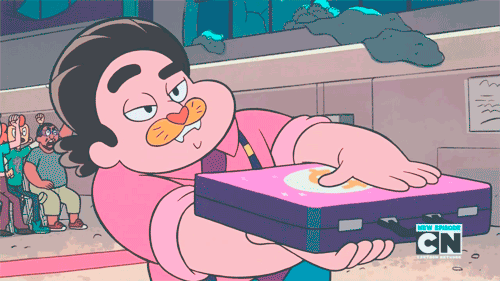
He'll eat your kids and fire your parents! He's also a veiled reference to the wrestling manga hero "Tiger Mask," who also undergoes a heel-face turn in his wrestling career when he realizes his scary reputation could be harmful. Combine this 70s shonen hero with famous WWF baddie Ted "Million Dollar Man" DiBiase, with a dash of his tag-team partner Irwin R. Schyster, and you have a truly goofy recipe of wrestling references.



Of course, we can't have wrestling anime references without mention of Kinnikuman, the most famous anime wrestler of all. Steven Universe gives a nod to this character as Americans knew him in the 80's, through a line of collectible eraser-toys known as M.U.S.C.L.E. (Millions of Unusual Small Creatures Lurking Everywhere.)

In Steven's universe, M.U.S.C.L.E.s are known as G.U.Y.S. (Guys Under Your Supervision), but true to their Japanese origin, they're actually sold in gachapon form. So instead of buying up packs at the local toy store, Steven must endure the anguish of slamming quarters endlessly into an unforgiving machine and praying for the GUY he wants to come rolling down the pipe.
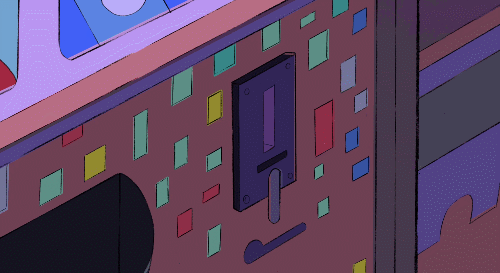
If there's a gag more layered than that in the show, I haven't discovered it yet. Even if you don't pick up on its many nods to Japanese comics, games, and animation, Steven Universe is a delightful adventure that holds up on its own to all kinds of audiences. I look forward to enjoying more new episodes on their own merits, as well as picking up on more tributes and homages in the future.
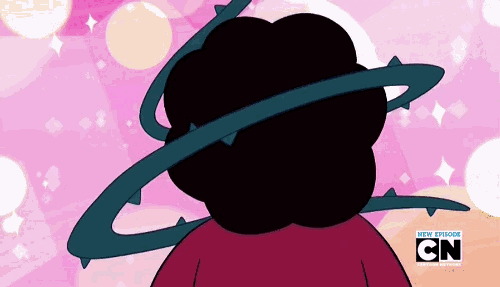
discuss this in the forum (286 posts) |
this article has been modified since it was originally posted; see change history